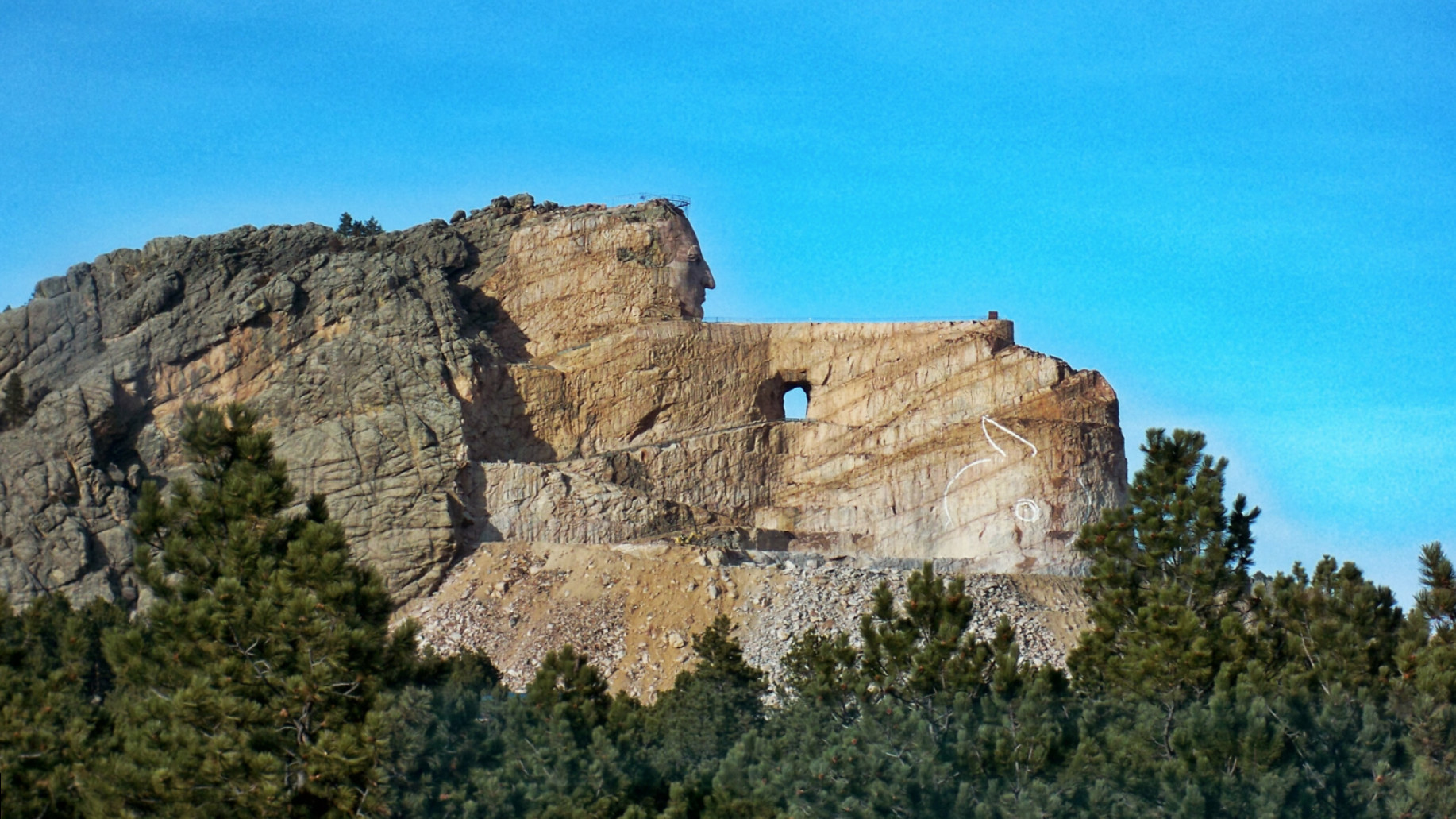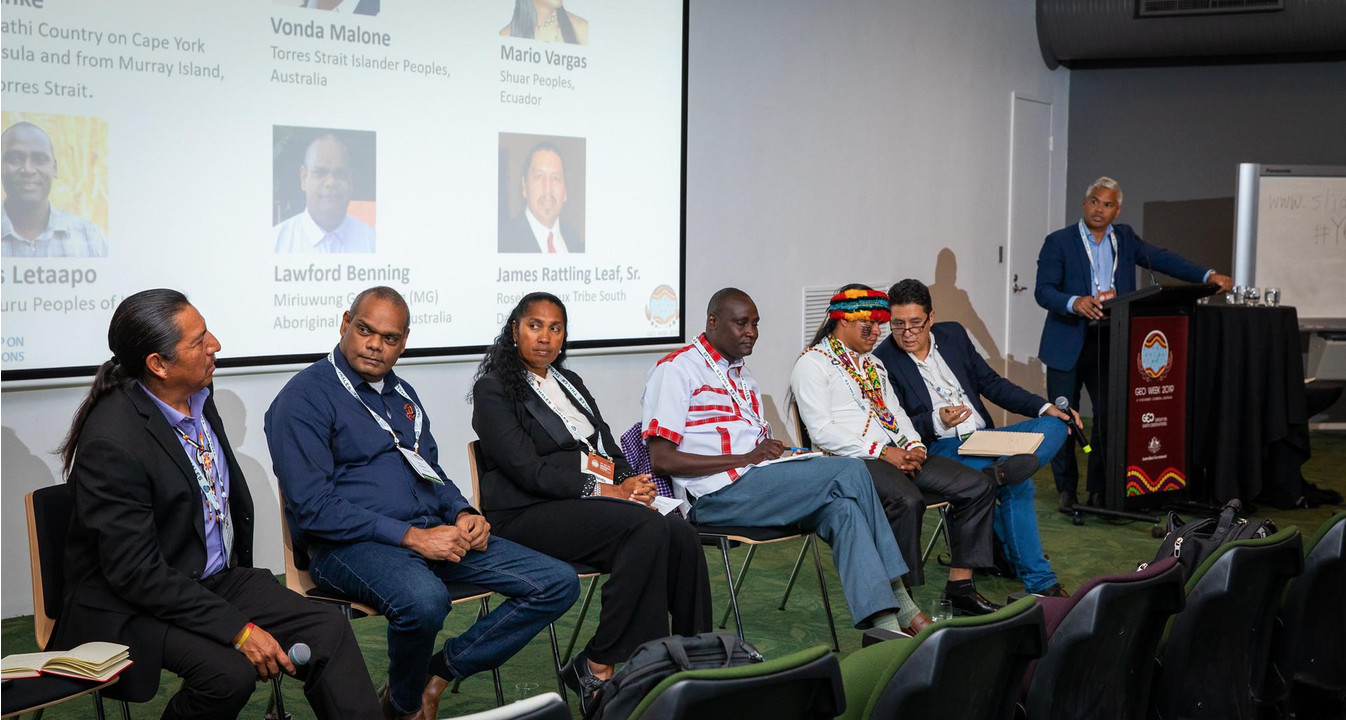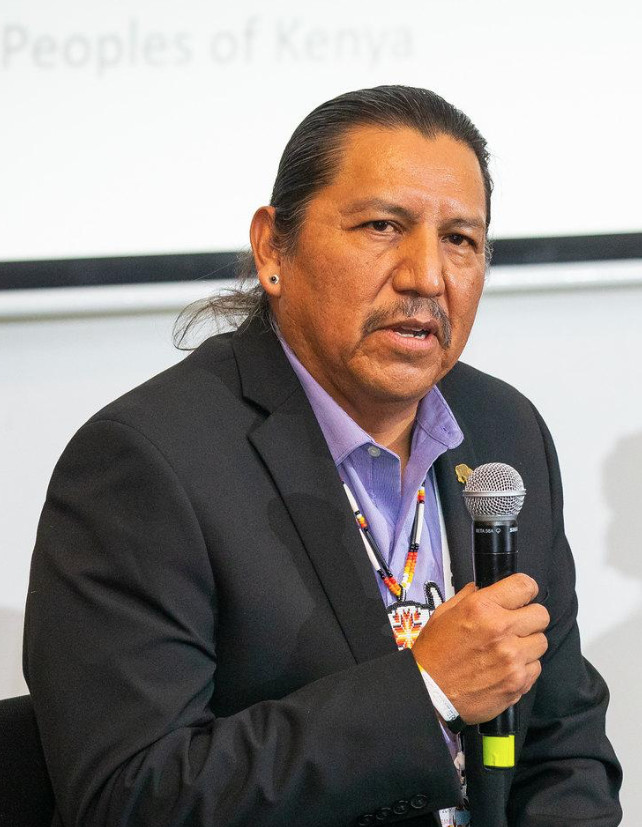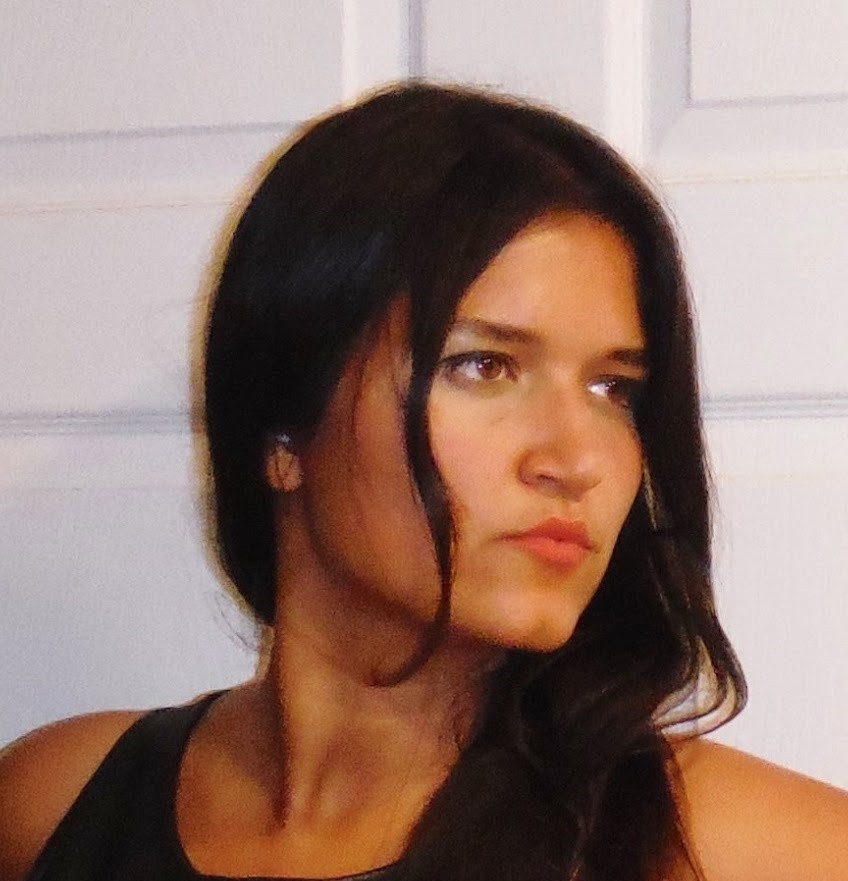Blog / James Rattling Leaf. Sr. & Diana Mastracci / June 3, 2020


James Rattling Leaf, Sr., currently serves as a Cultural Intelligence Consultant. He was born on the Pine Ridge Indian Reservation and is an enrolled member of the Rosebud Sioux Tribe. He specializes in developing programmes that utilize the interface between Indigenous People’s Traditional Knowledge and Earth System Science. Rattling Leaf shares his Tribal heritage to strengthen his Tribe through education, focusing on community, economic and social development and to teach while preserving the Lakota values and heritage. He works with students to enhance their geoscience experience by developing funding, finding scholarships, and providing mentoring and internships. His higher education comes from Sinte Gleska University.
James is a founding member of the GEO Indigenous Alliance that was established at GEO Week 2019 in Canberra, Australia to foster a continued, effective, respectful, and reciprocal relationship with GEO and representatives of indigenous communities from around the world. He is involved in the GEO Indigenous COVID-19 Hackathon 2020 taking place from June 5-7 2020.
Diana Mastracci (DM): What advice would you give to space agencies and data providers who wish to engage with Indigenous communities?
James Rattling Leaf Sr. (JRL): I think it starts with understanding to incorporate our principles of Free, Prior and Informed consent into their engagement practices. It will be encouraging to have an Indigenous presence in these agencies, so as they plan missions, projects, applications there is a representative from our people, our countries, our cultures. I think there has to be a role in these organizations, an Indigenous voice. It also recognizes again, the nature of Tribal Governments as nation-to-nation relationships, those high-level relationships that are important work going forward.
I think another part is looking at our youth. There is a lot of emphasis now on the next generation, a lot of our older people are retiring coming out of these agencies. It would be a great opportunity for them to continue to work on developing these unique programmes, training them, teaching them to apply this kind of skills that would be helpful in future work for them, but also encouraging students to pursue graduate level type of careers so that they can participate in the best cutting edge science or research project.
Climate change is showing us that all types of knowledge are going to be needed to come up with solutions. I think it will be important to understand that Indigenous People have a contribution to make going forward in the future. But also looking back in the past at our cultural heritage and at the new discoveries in ethnography and archaeology, all these records of cultural artefacts, items of cultural patrimony are questioning previous assumptions of our culture and how sophisticated they were. As agencies work with us, as Indigenous Peoples, they have to allow themselves to be open to these kinds of discoveries. There will be new eyes, new lenses to the values of Indigenous People. I think if they carry that as part of their new understanding, and allow those kinds of discussions, I think it will be better for all of us.
These are three things that agencies could do right away. And also, the fourth would be to fund these things and allow these kinds of projects to advance our understanding of the Earth as a system and of the culture and biodiversity. I think that would be important as well. And recruit people like you, Diana, to lead those kinds of efforts, with your background and your training, I think it would be great.
DM: You are one of the founding members of the GEO Indigenous Alliance that was recently formed in Canberra, Australia. Could you tell us more about it please?
JRL: I think it was a great opportunity to be invited as part of the United States’ Delegation to represent the Indigenous perspective from the US. It was the first time for me to be part of such an international gathering, so I take that to heart. Indigenous People have an important role to play in the future of this world. And a lot of our leaders are on board in articulating what we need to do in how science, western form of science, can be helpful to that.
My main message was not only for us to join the GEO community but for the GEO community to join us as well in our struggles and to work with us to prepare our youth for the future. GEO tools can be helpful to our youth. I think it’s important that we get a good understanding from other Indigenous Peoples around the world on how we can do that. To have a really good support base, build it from the ground up. Our role right now is to develop core guiding principles, guidelines and start sharing that with other people from around the world who are interested in working with Indigenous Peoples.
In my teachings from my culture, when we get a chance to speak to people that we don’t know or who don’t know us, it’s always important to introduce ourselves in a way that establishes and re-establishes ourselves to the material world but also to the spiritual world. That is what I was trying to do when I was there, even though I was thousands of miles away from my homeland. Many of the people who supported me to go were both leaders and spiritual people. They sent me there with prayers, good energy and good thoughts for good words. Then it becomes a responsibility. I think what we are trying to do is foster a sense of responsibility to this planet.
By us being there, by us participating, by us having a shared voice, an equal voice in these things, is important, its respect. I think the GEO Indigenous Alliance has an opportunity to continue the work that has already been started. This is nothing new in terms of Indigenous Peoples organizing themselves around something important in the world. This is just a continuation of that effort, but brings in new voices such as mine and others who are interested in GEO work with Indigenous Peoples.


I am excited about the work ahead, my Tribe has been involved for many years in international work, so I am just continuing to be a co-convenor of this work, to represent my Tribe and my culture. It’s an honour for me, but it will also be a great learning experience as we go forward, so I am excited about what the future holds.
DM: What do you think the world could learn from a Lakota worldview?
JRL: I think one overarching term that we use in our everyday life is Mitakuye Oyasin, it means that we are all related. It’s a unifying concept, unifying way of knowing or understanding our place in the universe. These high-level concepts are important because with this framework we begin to see and understand our world and our relationship to the world. When we have the kind of issues and challenges that we face today, there is this whole idea, this mindset that we have this role, this ecosystem that does not separate spiritual from material but it’s all included.
More and more people are starting to understand that our universe is alive versus it being inert and dead, and we see the world that way. And, I would say that most Indigenous People see the world that way. And I know that might be a hard concept or maybe they are ideas from the past, but we still live that today in 2020. And we, Lakota people, know that we have a role and responsibility, we practice our customs, our ways of understanding, our traditional knowledge every day. We have spiritual events every year. In the summer time we have the Sun Dance that is one of our premier or most important events and it brings us together as a culture and it reminds us of our relationship to the world, to our universe. Lakota people still practice our ways of understanding, our ways of knowing despite everything that happened to us. I think it's valuable that each Indigenous culture continues to practice their own customs and we share a lot of these things with other cultures. Lakota people have been open to sharing the things that we know, and I think that is our contribution to the world so to speak, as I understand it in my opinion. I don’t say that our way is the best way, it's just a way. So, these are my words of wisdom for your people.
You are involved in the GEO Indigenous COVID-19 Hackathon 2020 that will take place June 5-7 online. Why did you decide to participate?
I was asked if I wanted to participate in a hackathon that would focus on Indigenous youth, who come from communities who have been affected by the COVID-19 pandemic. From my perspective it’s important to look at different solutions and at different ways to engage our youth and communities around COVID-19, and to understand how GEO technologies can address and provide ways to protect our community. Working across the globe and with other Indigenous communities will allow a great learning opportunity for Indigenous youth to see how other Indigenous communities are approaching the issue, how they are using technology and how they are using the internet to understand the pandemic but also to prepare the youth, to see the values in this kind of skills.
I believe in activities that inspire Indigenous youth to see the future in terms of jobs skills and education. But also in using those skills and education as an opportunity to address serious important issues like the current pandemic. We should support this type of activity and we should also encourage learning across cultures. I think we can help prepare future leaders that can function well in both knowledge systems, western and Indigenous. This hackathon is making us ask tough questions about the role of technology in our lives, the role of science and data in our decision making whilst preparing the next generation to deal with these complex issues.
How can people get involved in the hackathon?
First and foremost, they can check out the GEO website for information to get involved with the hackathon. I would encourage the members of GEO, NGOs and other organizations to support the hackathon. This is an effort that I believe is going to make a difference. Being associated with it will allow you to support Indigenous youth and get experience in working with apps and learning to see what the future might hold in terms of future partnerships and projects.
It’s a good start if you are new to working with Indigenous youth and it would also be a good thing that organisations become more aware of what Indigenous communities are doing and of what is important to Indigenous youth today and of the importance in supporting Indigenous communities as they deal with the pandemic.
View the website for details to get involved below:


DM: Lastly, you have worked on a number of projects with NASA, ESRI and many other international institutions integrating satellite data with indigenous knowledge, which project are you most proud of and why?
JRL: One project that happened many years ago that really got me interested and involved in all these kinds of technologies in our Tribal cultures, was a project called RezMappers. Our goal was to really bring awareness to our own tribe on how satellite imagery, mapping technology and also other kinds of data, could be brought together into one integrated platform that could be easily distributed, shared and used by all levels of technical ability. And I am most proud of that, because really it was the first time that we as Lakota people, to my understanding, described or articulated what GIS was or how we define it in our own terms, in our own culture, in our own language. That was really powerful to see on a software interface, Lakota language in conjunction with a Landsat Satellite image or ESRI shapefile.
It was a great collaborative effort between a University, a private company and the US agencies that provided us the data. And also our tribal historians, our tribal Elders who helped to come up with cultural terms for GIS, and who contributed stories about places in the land that we included in this RezMapper product. This was maybe 2003-2004, but I think the guiding principles that were formed on how we interface with data, technology and science is still very relevant today in 2020. So, I think the idea of RezMapper and maybe another version of RezMapper, maybe 2.0, should be looked up really seriously. How we could revisit that and update it and see how we could bring in additional information that is important. Maybe make it more of an intergenerational knowledge transfer tool, that you could share stories and pictures, videos, historical images that we were not able to do at the time. Ideas like that are really important I think, and we need to continue to explore that.
About the authors

James Rattling Leaf. Sr. currently serves as a liaison between the Federal Government and respective tribes, organizations while providing leadership for the development and implementation of climate change adaptation strategies and action. He assists the federal government requirements for government-to-government consultation, and to fulfill the Federal trust responsibility. His service positions have also included Dakota State University Community Developer (1998-1999); Community Planner, Sinte Gleska University (1999-2001); Director, Geospatial Applications Center, Sinte Gleska University (2001-2008); Visiting Collaborator, South Dakota School of Mines and Technology (2008-2009); Principal, Rattling Leaf Consulting (2009-Present) – a position in developing, maintaining positive on-going working relationships with federally and non-federally recognized Indian tribes, Tribal College and Universities and Tribal Communities.

Diana Mastracci is a researcher at the University of Oxford passionate about finding creative ways to maximize the impact of current technologies to empower social change initiatives among indigenous communities. She has co-designed, together with the Arctic youth, Elders and scientists’ various innovative hackathons and citizen science projects at the interface of traditional and scientific knowledge. She has conducted fieldwork amongst the Iñupiat community in the Alaskan Arctic as well as with the Nenets reindeer herders in the Russian Arctic.
She has worked at the European Space Agency, NASA’s Jet Propulsion Laboratory, the University of Oxford, Citizen Cyberlab, was a visiting scholar at the Cartographic Research Centre at Carleton University and a visiting student at St. Petersburg State University. Diana holds an MA with joint Honours in Social Anthropology and Russian from the University of St Andrews, an MSc in Biodiversity, Conservation and Management from the University of Oxford and a Diploma in Documentary Filmmaking from the EICTV in Cuba.
Thank you for your subscription to the GEO Week 2019 mailing list.